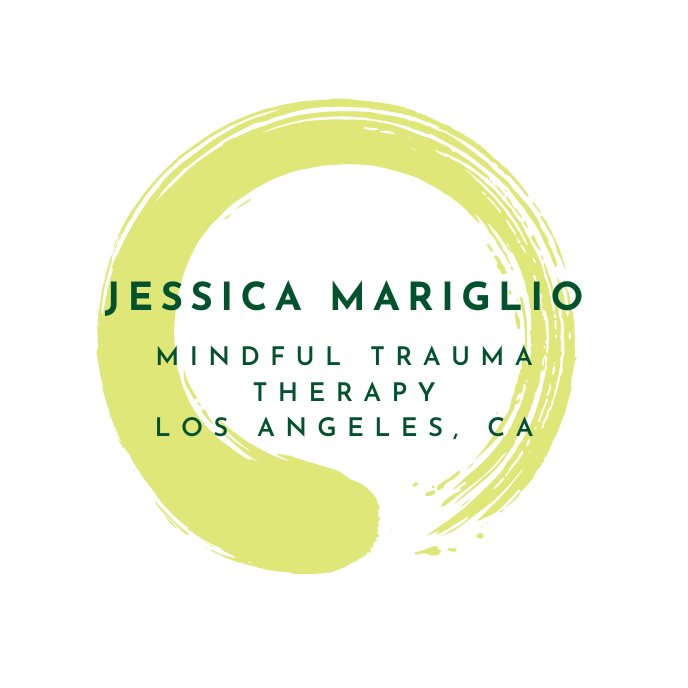
MINDFULNESS BASED THERAPY
Try to practice how to feel sad without actually being sad.
-Mingyor Rinpoche
What is Mindfulness Based Therapy?
Mindfulness Based Therapy starts with a radical assumption: that at your core, you are fundamentally good. Not broken, not damaged—just maybe temporarily disconnected from your essential self.
(You don't have to believe this yet. That's okay.)
The word "mindfulness" comes from the ancient Pali word "Sati," which actually means "that which is remembered." So mindfulness practices are really remembering practices—remembering to come back to this moment, even when your mind is stuck replaying the past or spinning out about the future.
This becomes especially powerful when you feel controlled by your reactions, with little sense of agency over your emotions or behaviors. Mindfulness creates space between what happens to you and how you respond—and in that space, real choice becomes possible.
How does mindfulness work in therapy?
Mindfulness Based therapy teaches you practical skills you can use in everyday life to work with difficult thoughts, emotions, and physical sensations. Rather than trying to stop or fix these experiences, you learn to be with them in a different way.
These approaches are particularly helpful for people dealing with:
Anxiety and panic
Depression and emotional overwhelm
Addiction and compulsive behaviors
PTSD and complex trauma
Eating disorders and body image struggles
Chronic stress and burnout
The practices help create a small but crucial pause between a trigger in your environment and your internal emotional response. While the changes might feel slow at first, these practices are sneakily powerful. They're essential for building a sense of safety within yourself and developing the ability to self-regulate during difficult times—skills that may have been missed due to adverse childhood experiences.
What does mindfulness look like in practice?
In our sessions, mindfulness isn't about sitting in perfect meditation posture (though that's certainly an option). Instead, it's about cultivating moment-to-moment awareness of what's happening in your body, mind, and heart right now.
We might practice:
Noticing thoughts without getting swept away by them
Feeling emotions in your body without being overwhelmed
Using breath and body awareness as anchors when you feel activated
Developing compassionate curiosity toward your inner experience
Learning to be present with discomfort without immediately trying to escape it
The goal isn't to become a "good meditator"—it's to develop a different relationship with your inner life, one that's kinder and less reactive.
Getting started with mindfulness
If you're curious about starting a mindfulness practice but aren't quite ready for intensive therapy work, I have some free guided meditations posted here to help you explore what resonates.
For those interested in deepening your practice beyond these offerings, I've compiled a list of my favorite meditation centers on my resources page. Many offer both in-person and remote group classes and retreats.
Remember: mindfulness isn't about having a quiet mind or feeling peaceful all the time. It's about developing the capacity to be present with whatever is happening—including the messy, uncomfortable, very human parts of life.
Who can benefit from mindfulness-based approaches?
Mindfulness can be helpful if you:
Feel overwhelmed by your emotions or thoughts
Struggle with anxiety, worry, or racing mind
Want to break free from reactive patterns
Feel disconnected from your body or present moment
Are dealing with trauma but need gentle, gradual approaches
Want to develop more self-compassion and inner kindness
Feel stuck in cycles of self-criticism or judgment
Are interested in spiritual or contemplative approaches to healing
Want practical tools you can use outside of therapy sessions
The beauty of mindfulness is that it meets you wherever you are—no prior experience necessary.
Somatic Therapy
Somatic Experiencing (SE™) aims to resolve symptoms of stress, shock, and trauma that accumulate in our bodies and helps us release, recover, and become more resilient.
Eye Movement Desensitization and Reprocessing Therapy
Eye movement desensitization and reprocessing (EMDR) therapy is one of the most researched and utilized methods in the treatment forms of human distress connected to trauma.


